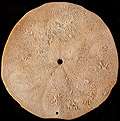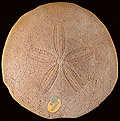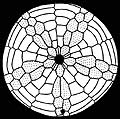The Echinoid Directory
Iheringiella Berg, 1898, p. 16
[= Iheringia Lahille, 1898, p. 437, non Keyserling, 1891; = Iheringiana Berg, 1898, p. 41 (objective); = Iheringina Lahille, 1899, p. 395 (objective) ]
| Diagnostic Features |
|
|---|---|
| Distribution | Miocene of South America. |
| Name gender | feminine |
| Type | Scutella patagoniensis Desor, 1847, p. 287, by original designation. |
| Species Included | I. patagoniensis (Desor, 1847); Miocene, South America. |
| Classification and/or Status |
|
| Remarks |
|


